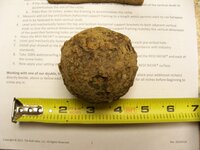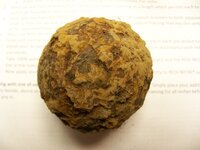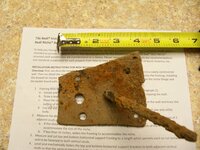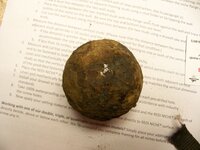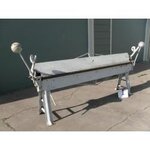tcornel
Sr. Member
I found this round iron object today. I weighs about 3 pounds and appears to be solid.
Is this a cannonball? From what period?
I also found some kind of implement with what appears to be a rod for a handle. Any clue as to what is is?
I thought a hoe but why the 5 holes?
Is this a cannonball? From what period?
I also found some kind of implement with what appears to be a rod for a handle. Any clue as to what is is?
I thought a hoe but why the 5 holes?


